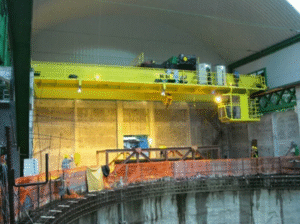Jenmon | Blogs
Electric Chain Hoist Maintenance: Tips to Ensure Long-Term Performance
Electric chain hoists stand as unsung heroes in today’s industrial settings, quietly handling the heavy lifting that keeps operations flowing. Anyone who’s spent time on a factory floor knows these machines make the impossible possible, moving substantial loads with remarkable precision. Smart businesses recognise that maintenance isn’t optional—it’s the difference between smooth sailing and costly disasters.
When teams give their hoists regular attention, those unexpected breakdowns that derail production schedules become far less common. Well-maintained equipment simply lasts longer, creating a safer workplace while protecting what is ultimately a significant investment. The humble hoist, when properly cared for, becomes a reliable partner in daily operations.
Why Proper Maintenance Matters for Your Electric Chain Hoist
In bustling commercial environments, a properly maintained electric chain hoist proves its worth every single day. Regular check-ups ensure these workhorses operate at peak efficiency, handling heavy loads without unnecessary energy consumption or safety concerns. Operators develop genuine confidence in equipment they know won’t suddenly drop loads or miss positioning marks.
Across MRTs and terminals worldwide, even minor malfunctions can cascade into major operational headaches. Well-maintained hoists respond with the kind of dependable performance that keeps production timelines intact and managers sleeping soundly, free from worries about unexpected equipment failures disrupting carefully planned schedules.
Essential Maintenance Tips to Keep Your Electric Chain Hoist in Top Condition
Regular Inspection for Wear and Tear
Inspect hooks, chains, and trolleys every week for indications of wear, fractures, or abnormal bending. Glide your fingers over the chain links to detect any rough areas that could suggest wear. Examine the motor casing for any loose screws or strange sounds while in use. Check the push-button controls to confirm they react promptly without any sticking.
Carefully examine the load-bearing parts where metal connects with metal since these areas degrade more quickly. Focus closely on the block assembly, ensuring every component moves smoothly without grinding or snagging. Create a checklist that tracks inspection dates to spot patterns of wear before they become dangerous.
Lubrication for Smooth Performance
Keeping your chain hoist properly oiled makes a massive difference in how smoothly it works. Apply fresh lubricant to the chain monthly, making sure it gets between every link. Don’t just spray and walk away—wipe off excess oil that might collect dust or drip onto goods below.
Different parts need different lubricants—gears usually need grease, while chains work best with penetrating oil. Check the manufacturer’s guide for specific recommendations rather than guessing. Apply lubricant when the hoist is cool, not right after use. Remember that under-lubrication causes wear, but over-lubrication attracts dirt that can be just as harmful.
Checking the Suspension and Load Capacity
Test the trolley wheels regularly to ensure they roll smoothly along the beam without wobbling. Verify that all suspension points remain firmly secured with no signs of bending or stress. Calculate the weight of typical loads and compare them against the rated capacity—never push beyond 80% of the maximum limit for safety’s sake.
Check the lifting height settings to confirm they match your workspace requirements. Inspect the hoist’s mounting bracket or hook for any deformation that might suggest that overloading has occurred. Look for even wear patterns on trolley wheels, as uneven wear indicates alignment problems. Remember that load capacity decreases as lifting height increases.
Electrical Components and Safety Features
Examine all wires carefully for fraying, especially where they enter the control pendant. Test the emergency stop button weekly to confirm it cuts power instantly when pressed. Check that limit switches work properly by slowly raising the hook to its highest point—it should stop automatically. Look for loose connections in the control box that might cause intermittent operation.
Test the phase rotation on three-phase motors to prevent unexpected movement directions. Verify that all warning labels remain legible and in place. Check that the overload protection system trips appropriately when tested. Remember that electrical faults often show warning signs before complete failure.
Cleaning and Storing Your Electric Chain Hoist
Wipe down the entire hoist after each use in dusty environments using a clean, dry cloth. Remove any concrete dust, metal shavings or chemical residues that might corrode metal parts. Clean the chain thoroughly by running it through an oil-soaked rag. Store the hoist in a dry, covered area away from chemicals, extreme temperatures and moisture.
Hang the control pendant to prevent wire damage from crushing or kinking. If storing long-term, apply a protective coating to exposed metal surfaces. Cover the hoist when not in use to prevent dust buildup. Follow specific supplier guidance for storage conditions based on your model.
Choosing the Right Maintenance Plan for Your Hoist

Every hoist needs care tailored to how it’s used. Single-speed models may need different attention than dual-speed versions that handle more complex lifts. Consider your typical loads and lifting heights when planning maintenance—hoists that regularly work near capacity need more frequent checks than those handling lighter duties.
Professional inspections catch problems that even experienced operators might miss. At Jenmon, we’ve seen how proper maintenance prevents costly downtime while extending equipment life. Our team works alongside customers from initial setup through years of service, providing round-the-clock support when problems arise. The right maintenance approach turns good equipment into great equipment that lasts.
Conclusion
Regular maintenance keeps electric chain hoists working safely and efficiently for years. By following these straightforward tips, businesses avoid costly breakdowns while ensuring worker safety. Remember that every check, cleaning and adjustment extends your equipment’s life while protecting your investment.
Jenmon provides comprehensive assistance for all your lifting equipment requirements, from the initial design to installation and continuous maintenance. Our team understand the common challenges in industrial environments. We offer practical solutions that won’t disrupt your operations. Ready to get started? Give us a call and explore how we can help you.




